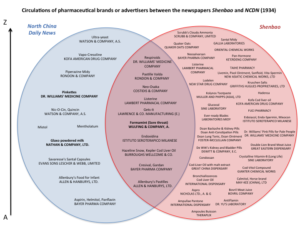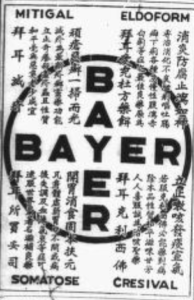“I walked back through the streets of this jungle city where detectives and gangsters hunted all men and women who entertained any thoughts other than the official ones. Within half an hour the girl [an activist] would have moved her dwelling and be warning all her friends”.1
The problem of “messy urbanism” is not one restricted to modern-day theory. Of course, more recently, this concept has been formalised in an edited volume by Manish Chalana and Jeffrey Hou: Messy Urbanism: Understanding the ‘Other’ Cities of Asia.2 Here, the contributors aim to look beyond the spatial and imagined construction of East Asian cities and award agency to the informal practices of urban life, which are given meaning as processes which both subvert and interact with formal hierarchies of city planning and organisation. “Messy” urban practices, such as the autonomy of slum dwellers on the periphery of a city, are renewed as a dynamic expression of the inhabitants of the city which constitute its real meaning.3 The authors suggest that the layers of actors and actions revealed by the concept of ‘messy urbanism’ allow us to view urban life from a diverse, rather than hierarchical perspective. However, the search to understand “conditions and processes which do not follow institutionalised or culturally prescribed notions of order” has long been a task of historians, anthropologists, theorists, and travellers alike.4
The lament of the “jungle city” above belongs to Agnes Smedley, an American triple agent who worked for the Soviets, Chinese Communists, and the Indian Nationalists. She has been described as a “fellow traveller”- a term coined by Trotsky to describe someone who had Communist sympathies, without actually belonging to the party or nation in question.5 The line comes from her monograph Battle Hymn of China, which describes China in the midst of the Sino-Japanese War which she witnessed alongside Chinese soldiers and Japanese prisoners of war (POWs).6 Her dedication at the start is “to the soldiers of China: poor, glorious pioneers in the world struggle against Fascism” and is representative of her desire to uncover the lived experiences of the population at the birth of Communism.7 For Smedley, the war created the cultural conditions for the articulation of the lives of the Chinese population, which arguably, she saw as the messy “urban fabric” that lay beneath China’s imperialist history.8
Smedley’s description of underground activists in Shanghai is largely valuable for an accurate representation of “messy urbanism”. The war-trodden city is described as a “jungle”, which suggests that the concrete fabric of the city had dissolved in favour of a natural loss of order. Here, Smedley adopts an almost nostalgic tone, as she illuminates the hidden structures of the city which worked toward the Communist resistance. The proletariat is inherently connected with the “messiness” of the city to emphasise their origins of poverty and disconnect from the old hierarchical and imperialist vision of Shanghai. Smedley describes this through a contrast between the “detectives and gangsters” of the government and “men and women” who can be seen as a personification of the spatial and visual order of the city. The “detectives and gangsters” enforce order against the messier undercurrents of “men and women” of resistance, who inhabit the street corners and slums which Smedley describes first-hand. Her account demonstrates how the Communist resistance formed part of the everyday “forms of planning and engagement” with the city, by using street corners to advertise Communist literature and slums to house temporary Communist ‘libraries’.9 This spatial usurpation was exacerbated by the fact that the perpetrators in the case were not only women, but “girls”. This heightened the objective sense of urban messiness by removing the female from her traditional role within the house and placing her in a visible position of defiance on the street corner, which she had claimed as her explicitly Communist “dwelling”. These dwellings were significant as an undefined and restricted feature of the city because when their activism was threatened, the girl and her friends simply moved their dwellings and “warn[ed]” fellow activists through their network of communications which subverted the government’s attempts at restraint. This demonstrates the fluid reality of Shanghai’s urban structures, which did not conform to planning or zoning, but instead provided a flexible foundation for the inhabitants of the city, who defined and utilised the streets according to profession, ideology, and present-time experience or emotion. The changes in the energy, success, and motivation of Communist activists during this period was reflected in the changing makeup of the different districts of the city, as dwellings emerged, moved, or were destroyed. Consequently, Smedley’s account illuminates the “broader patterns of informalized urban orders” through her description of wartime resistance, which can be characterised as the “messy” urban fabric of Shanghai in the 1930s.10 Likewise, Smedley’s own text can be seen as an effective form of engagement with this “messiness”, in which she gives meaning to urban messiness as an immersed witness of emerging Chinese Communism.
Frequently identified as a “fellow traveller”, Agnes Smedley’s grappling between the role of external witness and immersed reporter is representative of the struggle that the ‘Messy Urbanism’ authors elucidate between the removed ideology of the city and the lived experiences of its inhabitants.11 Smedley’s unique role places her between in a gulf between the two, and her text is a continual struggle to represent the “messy” urban conditions of the rise of Chinese Communism without the impression of an urban, foreign, gaze of misunderstanding- a “paradoxical quest for attachment outside the nation”.12 Overall, the text is largely valuable for an understanding of the informal structures and practices of the city, which, as historians, allow us to avoid “historicising the city instead of doing history inside the city”.13
- Agnes Smedley, Battle Hymn of China, (London, 1944), <https://archive.org/details/in.ernet.dli.2015.207541/page/n5/mode/2up> [accessed: 11 February 2022], p.56. [↩]
- Manish Chalana, Jeffrey Hou, Messy Urbanism: Understanding the ‘Other’ Cities of Asia, (Hong Kong, 2016). [↩]
- Chalana, Hou, Messy Urbanism, p.9. [↩]
- Chalana, Hou, Messy Urbanism, p.1. [↩]
- DWF Kerr, ‘Agnes Smedley: The Fellow Traveller’s Tales’ in DWF Kerr and J Kuehn (eds), A Century of Travels in China: Critical Essays on Travel Writing from the 1840s to the 1940s, (Hong Kong, 2007), p.1. [↩]
- Agnes Smedley, Battle Hymn of China, (London, 1944), <https://archive.org/details/in.ernet.dli.2015.207541/page/n5/mode/2up> [accessed: 11 February 2022]. [↩]
- Agnes Smedley, Battle Hymn, Title Page. [↩]
- Michel De Certeau, The Practice of Everyday Life, (California, 2011), p.47. [↩]
- Chalana, Hou, Messy Urbanism, p.17. [↩]
- Chalana, Hou, Messy Urbanism, p.5. [↩]
- Kerr, ‘Agnes Smedley’, p.1. [↩]
- Maureen Moynagh, Political Tourism and its Texts, (Toronto, 2008), p.112. [↩]
- Sheetal Chhabria, Making the Modern Slum: The Power of Capital in Colonial Bombay, (2019), p.9 [↩]

